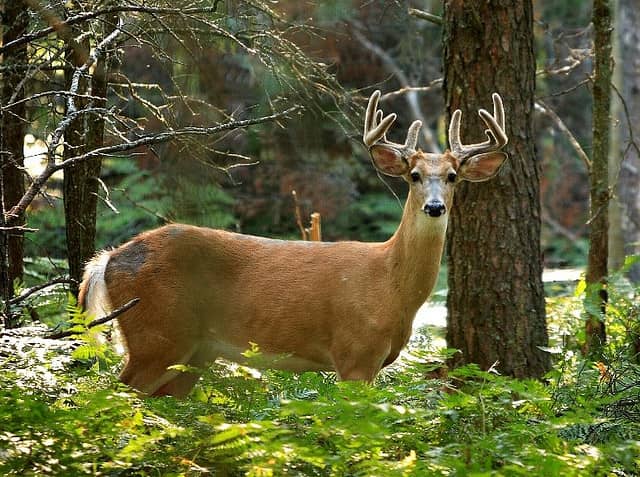Study: Deer React More to Firearms Season Than Archery Season
OutdoorHub Reporters 12.11.14

It has only been about two years since Pennsylvania State University researchers began fieldwork on their deer-forest study, but scientists are already drawing insights about the deer population in Pennsylvania’s Rothrock and Bald Eagle State Forests. The study is focused onthe movement of 40 collared deer, both male and female, who transmit their locations back to Penn State researchers every few hours. During hunting season, however, scientists receive updates as frequently as every 20 minutes. In fact, a large part of the study focuses on how the deer react to hunters and hunting pressure, and scientists are finding that there is a vast change in behavior between archery and firearms season.
“It’s like flipping a switch,” Duane Diefenbach, leader of the Pennsylvania Cooperative Fish and Wildlife Research Unit, told the Pittsburgh Tribune-Review.
“Their behaviors in archery season, there’s nothing to suggest these deer are being impacted by the hunting that’s going on to any great extent,” said Diefenbach. “But once the rifle season begins, we see some pretty dramatic differences. Some of these bucks will leave their home range and go places we’ve never seen them in the previous 10 months. It’s pretty amazing.”
Diefenbach wrote on the study’s webpage that both bucks and does have their own ways of hiding from hunters, but said that bucks who have survived at least one hunting season are especially skilled in finding spots that are not only remote, but also difficult to approach undetected.
“That’s right, these bucks find what I call ‘vantage points.’ Places where the prevailing wind comes from the west—nothing is going to sneak up on them from that direction. And to the east? A steep slope where they can make a quick getaway—or definitely see or hear some hunter struggling up the slope!” Diefenbach wrote.
One of the conclusions drawn by the research team is that deer that have experienced hunting pressure before will have a better strategy for survival than younger deer. It may seem like an obvious observation, but another study by scientists at the South Carolina Department of Natural Resources and Auburn University found that there was no correlation between deer age and changes in their movement. In that study, researchers found that deer of all ages tended to have the same home ranges and behavior. However, the Auburn University Project focused exclusively on bucks, and inside the dense Brosnan Forest far away from Pennsylvania.
The Penn State study may have also found evidence that deer can recognize the difference between different hunting seasons. In one example, a deer the scientists nicknamed the “Hillside Doe” stayed close to a road throughout bear season, but as soon as the deer firearms season began, the doe made a beeline for a steep “safe spot” on a nearby hill. The doe would stay there in the mornings and then come back down to eat in the afternoon, therefore bypassing the majority of hunters. It quickly became a routine and, needless to say, she has not been harvested yet.
“Since we began getting data from GPS collars, there are two things we have learned about deer movements during the rifle season that have amazed me,” Diefenbach wrote online. “First, deer respond to hunting pressure the day before the season opens (and not before). Second, their ability to hide somewhere in their home range during hunting hours is amazing.”
Diefenbach and his colleagues will continue to monitor the collared deer and welcome feedback from hunters in the area. Agencies involved include the US Geological Survey, the Pennsylvanian Game Commission, and the state Bureau of Forestry. The deer-forest study will evaluate the effectiveness of current management techniques in controlling the deer population, as well as testing forest management activities and protocols.

